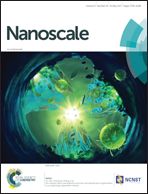Subthreshold swing improvement in MoS2 transistors by the negative-capacitance effect in a ferroelectric Al-doped-HfO2/HfO2 gate dielectric stack
Abstract
Obtaining a subthreshold swing (SS) below the thermionic limit of 60 mV dec−1 by exploiting the negative-capacitance (NC) effect in ferroelectric (FE) materials is a novel effective technique to allow the reduction of the supply voltage and power consumption in field effect transistors (FETs). At the same time, two-dimensional layered semiconductors, such as molybdenum disulfide (MoS2), have been shown to be promising candidates to replace silicon MOSFETs in sub-5 nm-channel technology nodes. In this paper, we demonstrate NC MoS2 FETs by incorporating a ferroelectric Al-doped HfO2 (Al : HfO2), a technologically compatible material, in the FET gate stack. Al : HfO2 thin films were deposited on Si wafers by atomic layer deposition. Voltage amplification up to 1.25 times was observed in a FE bilayer stack of Al : HfO2/HfO2 with a Ni metallic intermediate layer. The minimum SS (SSmin) of the NC-MoS2 FET built on the FE bilayer improved to 57 mV dec−1 at room temperature, compared with SSmin = 67 mV dec−1 for the MoS2 FET with only HfO2 as a gate dielectric.



 Please wait while we load your content...
Please wait while we load your content...